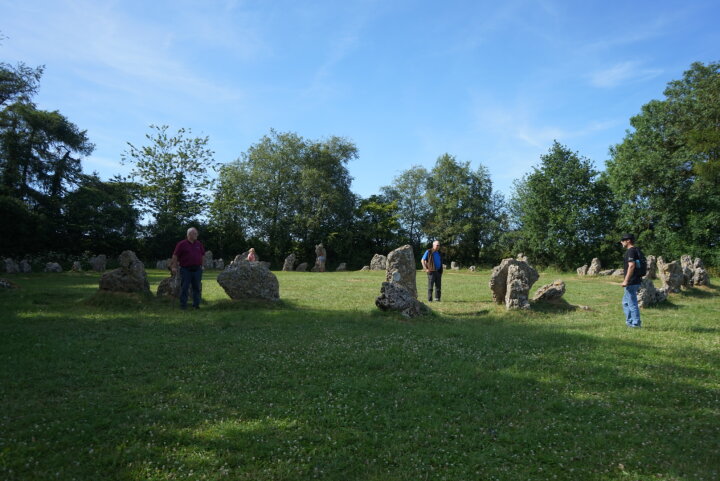The original Druids (I think Romano-British era) of course, left detailed, written explanations of their beliefs and practices...
'Tis an odd place, Glastonbury. An unassuming local market-town on the fringe of the Somerset Levels between the Mendip and Polden Hills, it was a monastic site, and remains of that include the tower on the local hill, Glastonbury Tor - a landmark from miles around .
For some reason though it seems to attract more latter-day "Druids", Wiccans, born-again hippies, crystal-strokers, pyramid-buyers and ley-line enthusiasts than anywhere else in England, including possibly Stonehenge - which far pre-dates the Druids' time.
It being a town, so having shops, cafes and bus routes to other towns, probably helps (Stonehenge is well out in open countryside); but for the total abandonment of history or physics in favour of fey faerie-stories, look to the commerce of Glastonbury.
All that mish-mash of twee nature-worship, imaginary "energy", vague myths about Joseph of Arimathea and King Arthur, "crystals" and the like, must be quite a source of income to the town!
'
I wonder where the agate is from? It's not local, but it or its other forms are common. There may be sources in Devon or Cornwall; but I would not be surprised if the stones sold now in Glastonbury, along with much of the other knick-knacks, are from China!
Agate is only a form of Quartz, crystalline Silicon Dioxide, also commonly found as flint. It can be beautiful though, in shape and in colours imparted by traces of other minerals within it. However, an agate crystal might be slightly piezoelectric - cut and polished quartz crystals were used in the earliest sonar transducers until better materials were developed. People misunderstanding that property, might those responsible for the modern, romantic myths about "energy", "healing crystals" and alleged Druids supposedly "re-charging" pebbles in stone circles they never built.
.
(Joseph is said - possibly by some Mediaeval monk? - to have travelled from the Holy Land to the site of what became occupied by Glastonbury centuries later... for no obvious reason. The myth continues with his planting his staff and it developing into a bush.
Arthur was the king in the 15C novel, possibly the world's first large work of fiction, Le Morte d'Arthur, by Sir Thomas Malory. It is Malory's re-working of French and English folklore already old in his time.. The novel became much revised by later writers even before Hollywood's grotesqueries; but even the original was pure fiction, in which any resemblance to real persons and events is purely co-incidental....)






